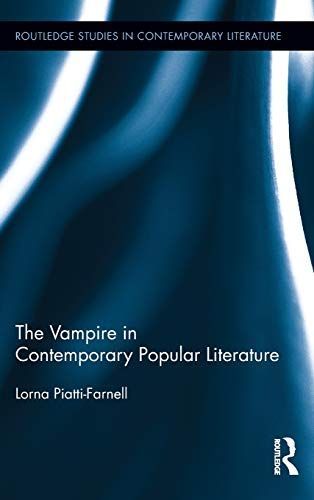
The Vampire in Contemporary Popular Literature
Prominent examples from contemporary vampire literature expose a desire to re-evaluate and re-work the long-standing, folkloristic interpretation of the vampire as the immortal undead. This book explores the "new vampire" as a literary trope, offering a comprehensive critical analysis of vampires in contemporary popular literature and demonstrating how they engage with essential cultural preoccupations, anxieties, and desires. Drawing from cultural materialism, anthropology, psychoanalysis, literary criticism, gender studies, and postmodern thought, Piatti-Farnell re-frames the concept of the vampire in relation to a distinctly twenty-first century brand of Gothic imagination, highlighting important aesthetic, conceptual, and cultural changes that have affected the literary genre in the post-2000 era. She places the contemporary literary vampire within the wider popular culture scope, also building critical connections with issues of fandom and readership. In reworking the formulaic elements of the vampiric tradition — and experimenting with genre-bending techniques — this book shows how authors such as J.R. Ward, Stephanie Meyers, Charlaine Harris, and Anne Rice have allowed vampires to be moulded into enigmatic figures who sustain a vivid conceptual debt to contemporary consumer and popular culture. This book highlights the changes — conceptual, political and aesthetic — that vampires have undergone in the past decade, simultaneously addressing how these changes in "vampire identity" impact on the definition of the Gothic as a whole.